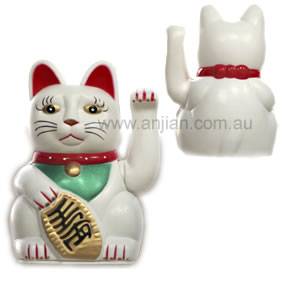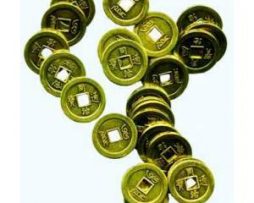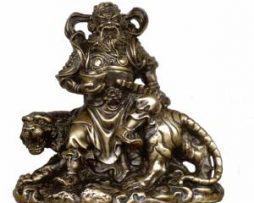Money Cat Waving, symbolises wealth. Maneki Neko (1603-1868) The Cat Temple
A famous legend connected to the Lucky Money Cat is about a temple in Kyoto, Japan, called Shonenji, more commonly known as Nekodera, (The Cat Temple). A kindly priest had no money but looked after a cat. The cat repaid him by entering the spirit realm and seeking wealthy patrons for the temple. The Lucky Cat is believed to be an incarnation of Quan Yin, Goddess of Mercy. The Maneki Neko raises its right paw to symbolise protection of wealth and good fortune. The gold colour Lucky Money Cat is believed to invite great abundance and wealth. The Lucky Money Cats are often used in business. This statue does not come with batteries.
Money Cat Waving Statue, white finish 130mm, AA Battery not included
$15.00
Money Cat Waving, symbolises wealth. Maneki Neko (1603-1868) The Cat Temple
A famous legend connected to the Lucky Money Cat is about a temple in Kyoto, Japan, called Shonenji, more commonly known as Nekodera, (The Cat Temple). A kindly priest had no money but looked after a cat. The cat repaid him by entering the spirit realm and seeking wealthy patrons for the temple. The Lucky Cat is believed to be an incarnation of Quan Yin, Goddess of Mercy. The Maneki Neko raises its right paw to symbolise protection of wealth and good fortune. The gold colour Lucky Money Cat is believed to invite great abundance and wealth. The Lucky Money Cats are often used in business. This statue does not come with batteries.





